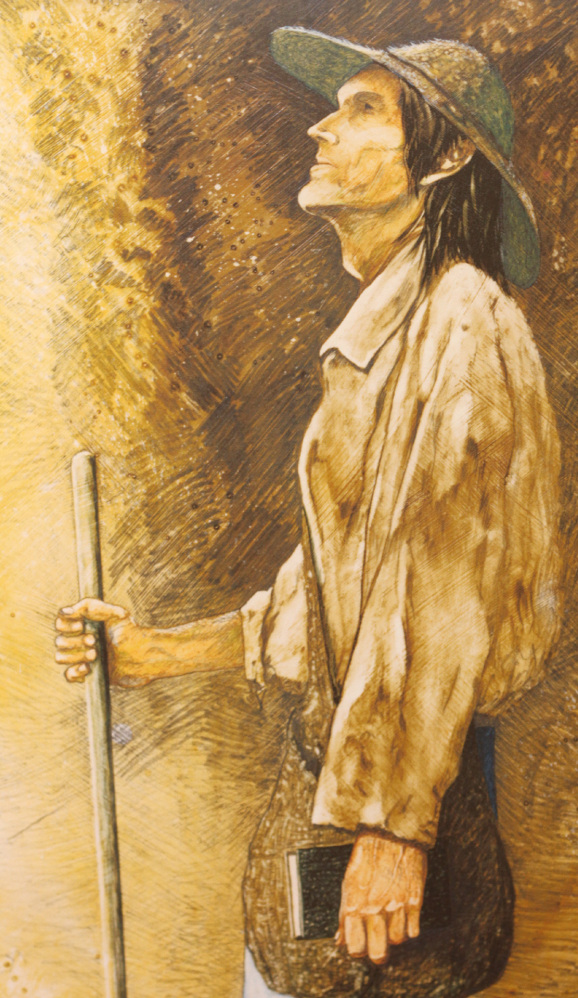CINCINNATI — If you picture Johnny Appleseed as a loner wearing a tin pot for a hat and flinging apple seeds while meandering through the countryside, experts say you’re wrong.
They’re hoping that a traveling exhibit funded by an anonymous donation to a western Ohio center and museum will help clear misconceptions about the folk hero and the real man behind the legend.
“We want people around the country to know the real person, not just the myths and folklore,” said Cheryl Ogden, director of the Johnny Appleseed Educational Center and Museum at Urbana University in Urbana. “We want them to know John Chapman’s values of hard work, compassion and generosity.”
Chapman, known as Johnny Appleseed to generations of Americans, was a pioneer nurseryman in the late 18th and early 19th centuries credited with introducing apple trees to portions of Ohio, Indiana, Illinois, Pennsylvania, Kentucky and West Virginia. While colorful stories and films depicting him living outdoors and wearing ragged clothes are probably partially true, researchers doubt he wore a pot on his head or just gave his seedlings and nurseries away.
At the same time, there are documented accounts of him going barefoot after giving his shoes to someone in need. He also widely distributed religious tracts as a missionary of the Swedenborgian Church, a Christian faith embracing individualism and spiritual growth.
Chapman was born in 1774 in Leominster, Massachusetts, where a small replica of his home now stands.
Send questions/comments to the editors.



Success. Please wait for the page to reload. If the page does not reload within 5 seconds, please refresh the page.
Enter your email and password to access comments.
Hi, to comment on stories you must . This profile is in addition to your subscription and website login.
Already have a commenting profile? .
Invalid username/password.
Please check your email to confirm and complete your registration.
Only subscribers are eligible to post comments. Please subscribe or login first for digital access. Here’s why.
Use the form below to reset your password. When you've submitted your account email, we will send an email with a reset code.